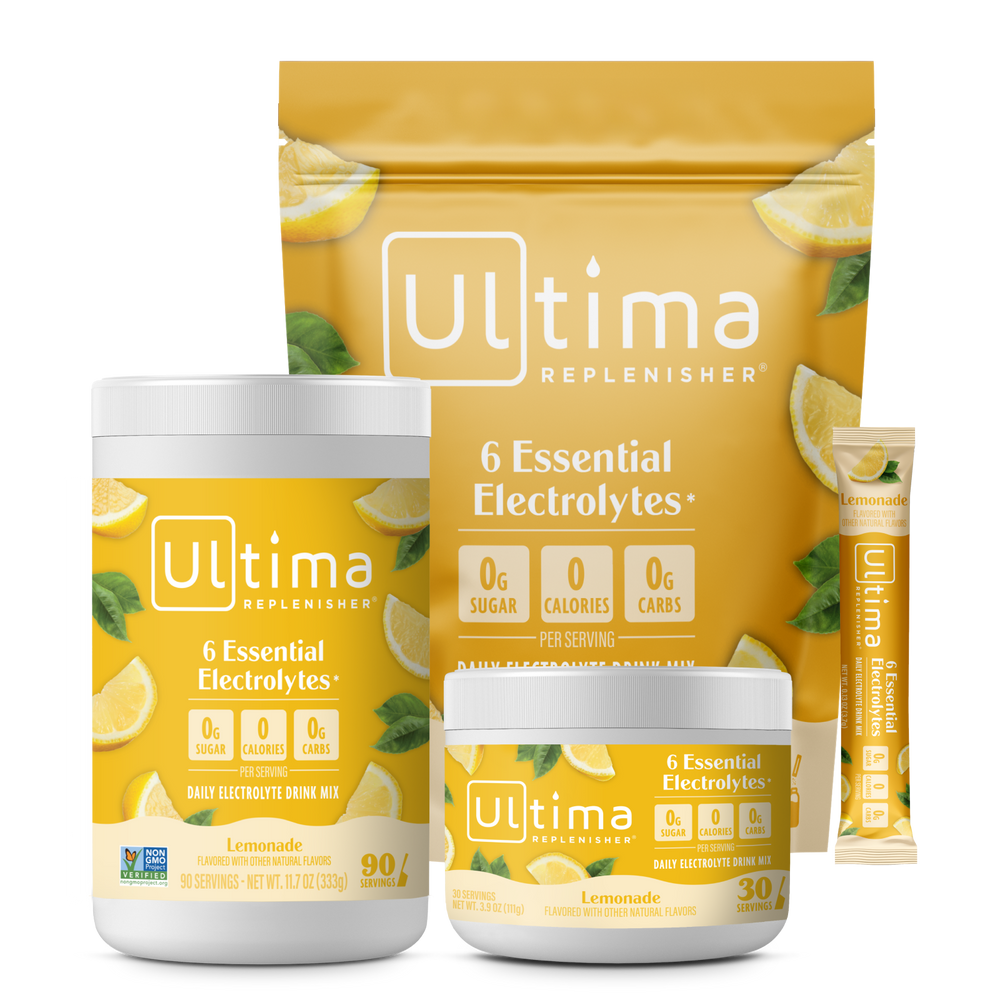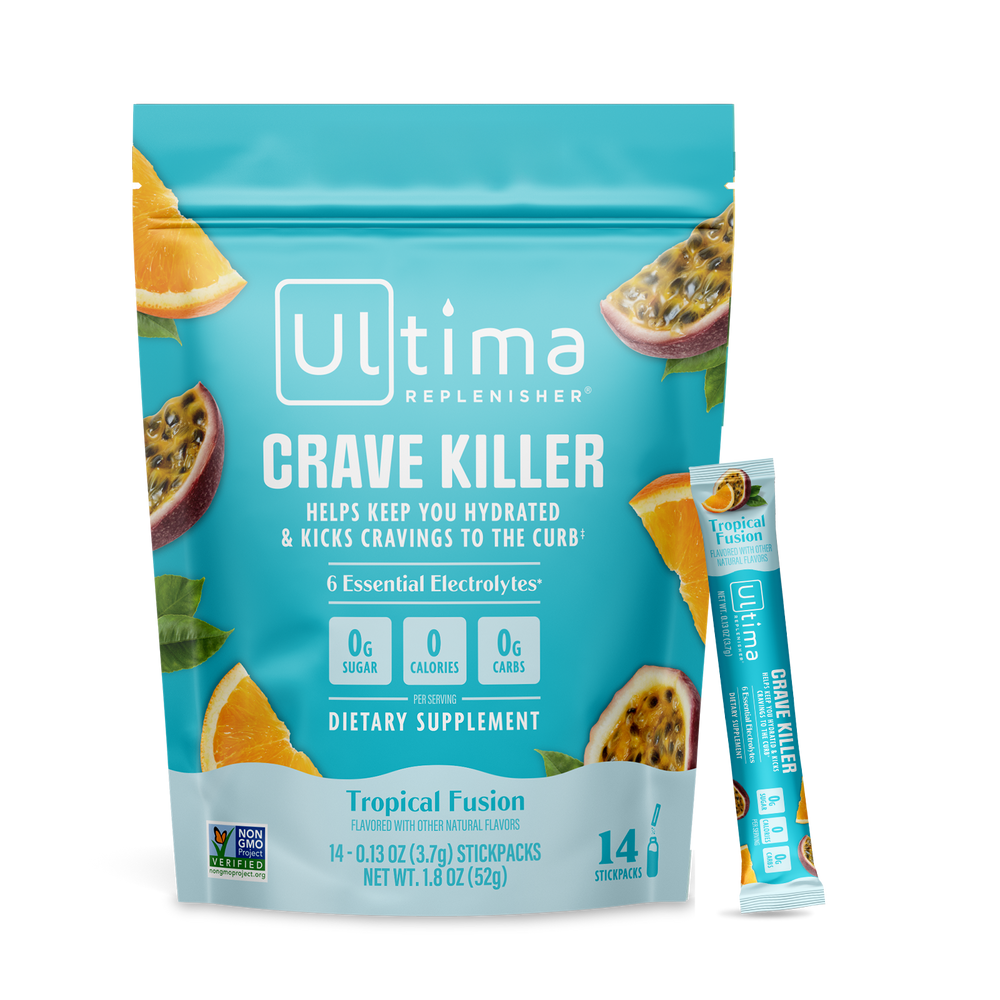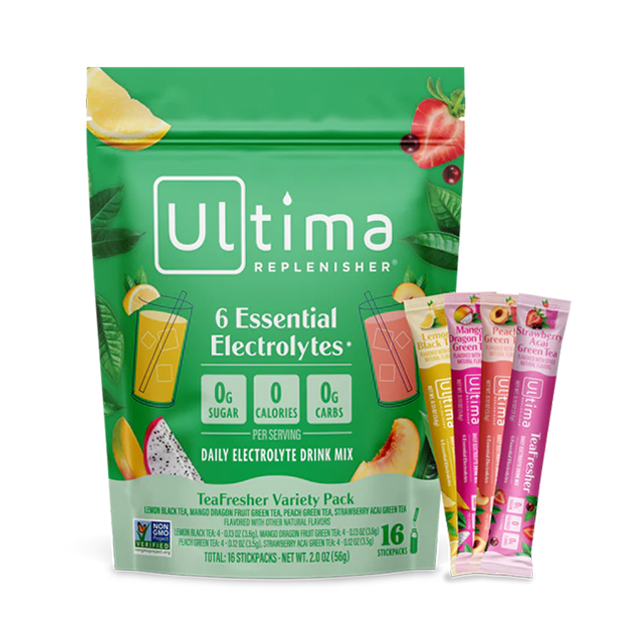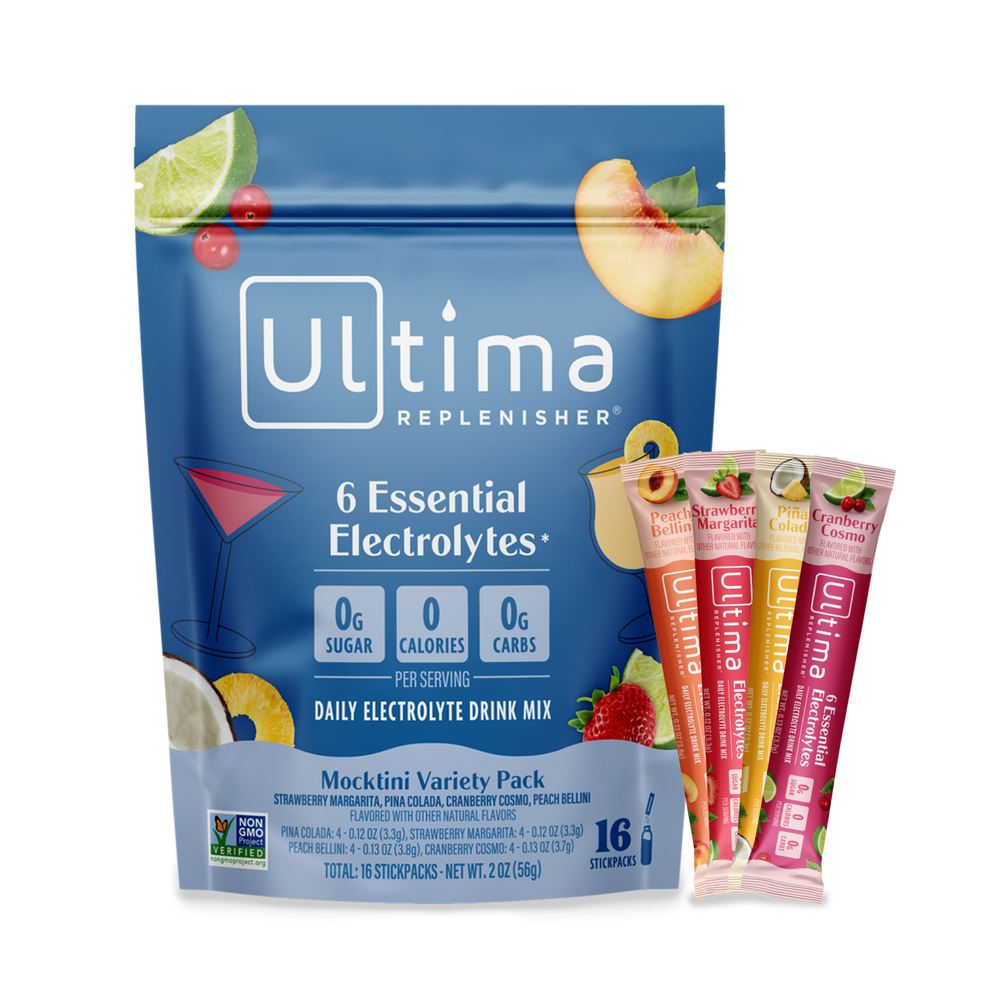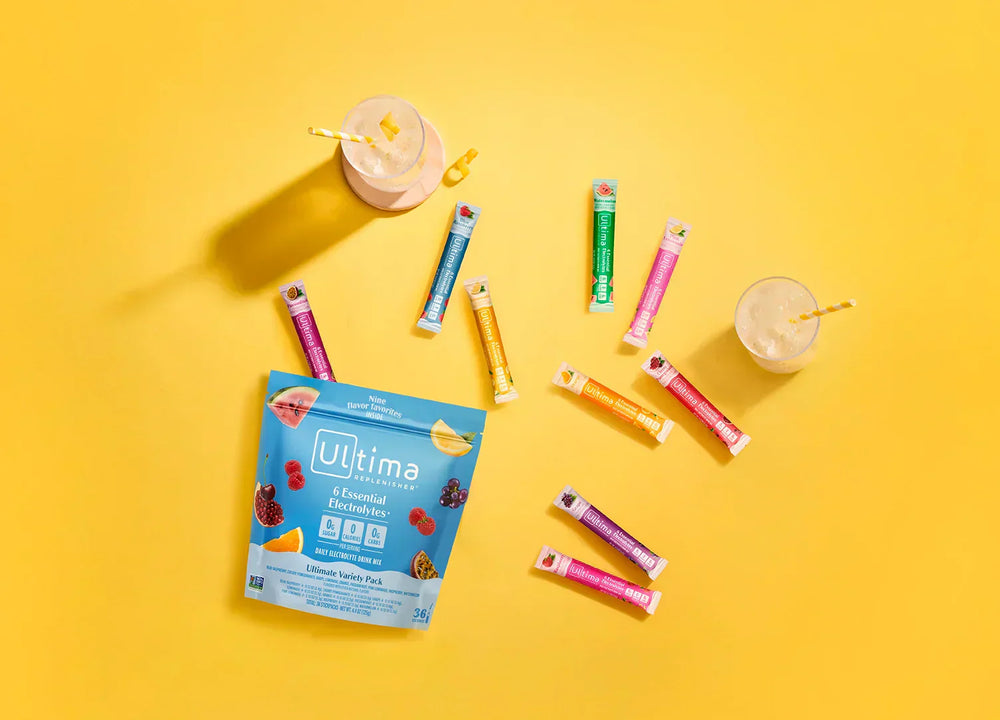
Keto Flu: What It Is, How To Get Rid Of It
What Is Keto Flu And How To Get Rid Of It
What is keto flu?
Keto flu—sometimes known as “ketosis flu”—isn’t actually a flu at all. It’s a collection of symptoms that pop up when your body starts transitioning to a ketogenic diet. Think of it as your metabolism hitting the reset button, swapping from carbs for fat as its primary fuel source. As your body adjusts to this new energy system, you might feel tired, foggy, cranky, or even a little dizzy. But don’t worry—it’s not forever. Keto flu isn’t an illness, just your body working hard to reach ketosis. With the proper support, you can learn how to get rid of keto flu and get back to feeling your best—hydrated, energized, and ready to crush your goals.
Common Keto Flu Symptoms and Signs
The "keto flu" symptoms can vary from person to person, but here's a general idea of what you might experience:
-
Physical symptoms: Headaches, fatigue, muscle cramps, dizziness
-
Digestive symptoms: Nausea, stomach cramps, digestive discomfort
-
Cognitive symptoms: Brain fog, irritability, difficulty concentrating
-
Other symptoms: Insomnia, heart palpitations, sugar cravings
What causes keto flu symptoms?
Wondering what causes keto flu in the first place? It’s all about how your body reacts when carbs suddenly disappear from your plate.
-
Carbohydrate withdrawal: When your usual carbs run out, your body looks for fat for energy. This shift can cause cravings and energy drops.
-
Electrolyte imbalance: Insulin drops on keto diets as the kidneys expel sodium, potassium, and magnesium faster. Without replenishing, you feel sluggish, dizzy, and fatigued.
-
Dehydration: Carbs store water as glycogen in muscles. When glycogen depletes, the body loses stored water and electrolytes.
-
Metabolic adaptation: The body shifts from burning glucose to ketones, which can feel rough as your system recalibrates.
How long does keto flu last?
You’re probably asking: How long does keto fatigue last? Or maybe, how long does a keto headache last? For most people, symptoms appear within 1–3 days of starting keto, with the worst hitting around days 2–4. Thankfully, keto flu doesn’t stick around forever.
-
Typical timeline: 3–7 days for most people
-
Individual variations: Fitness level, hydration habits, previous carb intake, and electrolyte levels can speed up or delay recovery
-
Signs of improvement: Return of energy, fewer cravings, mental clarity, and reduced headaches
How to get rid of keto flu: If you properly hydrate and support your electrolytes, you can often shorten the duration and reduce discomfort.
How to get rid of keto flu fast
Ready to beat keto flu? Here’s how to feel better, faster:
1. Increase your electrolytes
Electrolytes are the #1 weapon against keto flu. As your body flushes sodium, potassium, and magnesium, replenishment is key to avoiding headaches, cramps, and fatigue.
Ultima Replenisher Mocktini variety pack electrolyte drink mix offers a zero-sugar, zero-calorie electrolyte solution perfect for keto lifestyles. Sip throughout the day to keep your levels balanced.
Electrolyte Comparison Table:
| Electrolyte | Pre-Keto Daily Need | During Keto Adaptation | Food Sources | Electrolyte Supplement Option |
|---|---|---|---|---|
|
Electrolyte |
Pre-Keto Daily Need |
During Keto Adaptation |
Food Sources |
Electrolyte Supplement Option |
|
Sodium |
1,500-2,300 mg |
3,000-5,000 mg |
Broth, pickles, olives |
Ultima Replenisher |
|
Potassium |
2,600-3,400 mg |
3,000-4,700 mg |
Avocado, spinach, salmon |
Ultima Replenisher |
|
Magnesium |
310-420 mg |
400-600 mg |
Nuts, seeds, leafy greens |
Ultima Replenisher |
2. Drink more water throughout the day
When you’re on keto, hydration makes everything easier. Proper fluids and electrolytes help prevent keto flu, reduce cramps, boost energy, and keep fat-burning running smoothly, making your low-carb life feel a whole lot better. Aim for half your body weight (lbs) in ounces of water daily. Distribute it evenly, especially before and after meals. Look for signs like clear urine and reduced dizziness as proof you’re hydrating well.
Read more: Four Reasons Why Electrolytes Are Important on a Low-Carb, High-Fat Diet.
3. Eat enough dietary fat
Fuel your body properly by eating plenty of healthy fats like:
-
Avocados: potassium, fiber, antioxidants
-
Olive oil: heart health, antioxidants, anti-inflammatory, cholesterol balance
-
Nuts: protein, minerals, reduce inflammation
-
Salmon: omega-3s, protein, vitamin D, anti-inflammatory
Fat supports energy, speeds up keto adaptation, and prevents worsened symptoms from undereating.
4. Adjust your workout routine temporarily
When keto flu strikes, reducing workouts helps your body adjust to using fat (ketones) instead of carbs for energy. During this transition, glycogen reserves are low, electrolytes decrease, and recovery slows, making intense exercise feel more difficult and exhausting. During adaptation, scale back workouts:
-
Swap intense training for light walks, yoga, or stretching
-
Avoid fasting workouts early on
-
Focus on recovery while your body adjusts
5. Get quality sleep
Getting quality sleep is essential during the keto flu because your body experiences extra stress as it shifts from burning carbs to burning fat for fuel. Deep, restorative sleep supports this transition by balancing hormones, reducing inflammation, and improving electrolyte levels—key factors in easing symptoms like fatigue, brain fog, and irritability. Tips to prioritize sleep for a quicker recovery:
-
Set a consistent bedtime
-
Avoid caffeine late in the day
-
Try magnesium-rich foods or calming teas for natural sleep support
Summary Table: Fast Keto Flu Relief Strategies
| Strategy | Effectiveness | Ease of Implementation | Speed of Relief |
|---|---|---|---|
|
Strategy |
Effectiveness |
Ease of Implementation |
Speed of Relief |
|
Increase Electrolytes |
★★★★★ |
★★★★☆ |
★★★★★ |
|
Drink More Water |
★★★★☆ |
★★★★★ |
★★★★☆ |
|
Eat Enough Dietary Fat |
★★★★☆ |
★★★★☆ |
★★★★☆ |
|
Adjust Workout Routine |
★★★☆☆ |
★★★★☆ |
★★★☆☆ |
|
Get Quality Sleep |
★★★★☆ |
★★★☆☆ |
★★★★☆ |
Quick tips for how to get rid of keto flu:
-
Drink Ultima Replenisher – Replaces lost electrolytes to help ease headaches, cramps, and fatigue.
-
Eat a salty snack (broth, olives) – Restores sodium lost during keto adaptation.
-
Rest—skip strenuous activity – Reduces stress on your body while it adapts to fat burning.
-
Sip water consistently – Prevents dehydration and supports electrolyte balance.
-
Eat a small high-fat meal – Provides steady fuel and curbs carb cravings.
-
Try zero-sugar, low-carb drink and dessert recipes – Satisfies cravings without kicking you out of ketosis.
Best ways to avoid keto flu before it starts
Want to learn how to get rid of keto flu altogether? Here’s how to plan ahead:
1. Transition carbs gradually
-
Week 1: Cut carbs to ~75g/day. Swap bread for veggies
-
Week 2: Drop to ~50g/day. Replace starchy sides with avocado or nuts
-
Week 3: Lower to 20–30g/day to reach ketosis
2. Plan with electrolyte support
Start taking Ultima Replenisher electrolytes before cutting back on carbs to help avoid electrolyte loss. It features a blend of 6 key electrolytes and has 0 sugar, carbs or calories. Aim for:
-
Sodium: 3,000–5,000 mg/day
-
Potassium: 3,000–4,700 mg/day
-
Magnesium: 400–600 mg/day
Pair electrolytes with steady water intake to boost absorption and stay balanced—especially on keto.
3. Monitor your caloric intake
Avoid under-eating during adaptation. Use a keto calculator to estimate calorie needs and focus on nutrient-dense meals eaten consistently.
4. Limit caffeine and alcohol
Caffeine and alcohol both dehydrate and can worsen keto-flu symptoms:
-
Cut back to 1–2 cups of coffee daily
-
Avoid alcohol entirely during the first few weeks
-
Try sparkling water or herbal teas instead
When should you seek professional advice for keto flu?
If your keto flu symptoms feel extreme or last longer than 10 days, it’s time to consult a healthcare provider. Watch for:
-
Severe nausea, vomiting, or diarrhea
-
Heart palpitations or chest pain
-
Persistent dizziness despite rehydration
-
Pre-existing medical conditions or medications that could interfere
Moving forward with a speedy keto flu recovery
Learning how to get rid of keto flu is a short-term challenge with long-term rewards. Focus on electrolytes, hydration, rest, and healthy fats to recover quickly—and stay ahead of future symptoms.
Even once you’re adapted, electrolyte balance remains critical for keto success. Keep Ultima Replenisher as part of your daily routine to maintain energy and hydration without sugar or carbs.
Explore Ultima’s full range of electrolyte powders to power your keto journey with ease.
Frequently asked questions about keto flu
Does keto flu affect everyone who tries a ketogenic diet?
No. Many people avoid symptoms by staying hydrated and supplementing electrolytes from day one.
What can I do about extreme fatigue or keto fever during adaptation?
Increase intake of sodium and potassium, hydrate well, rest, and eat enough healthy fats to ease these symptoms.
How can I manage nausea on a keto diet effectively?
Try small, frequent meals, drink plenty of water, and use Ultima Replenisher to keep electrolytes balanced while avoiding carb-heavy solutions.
